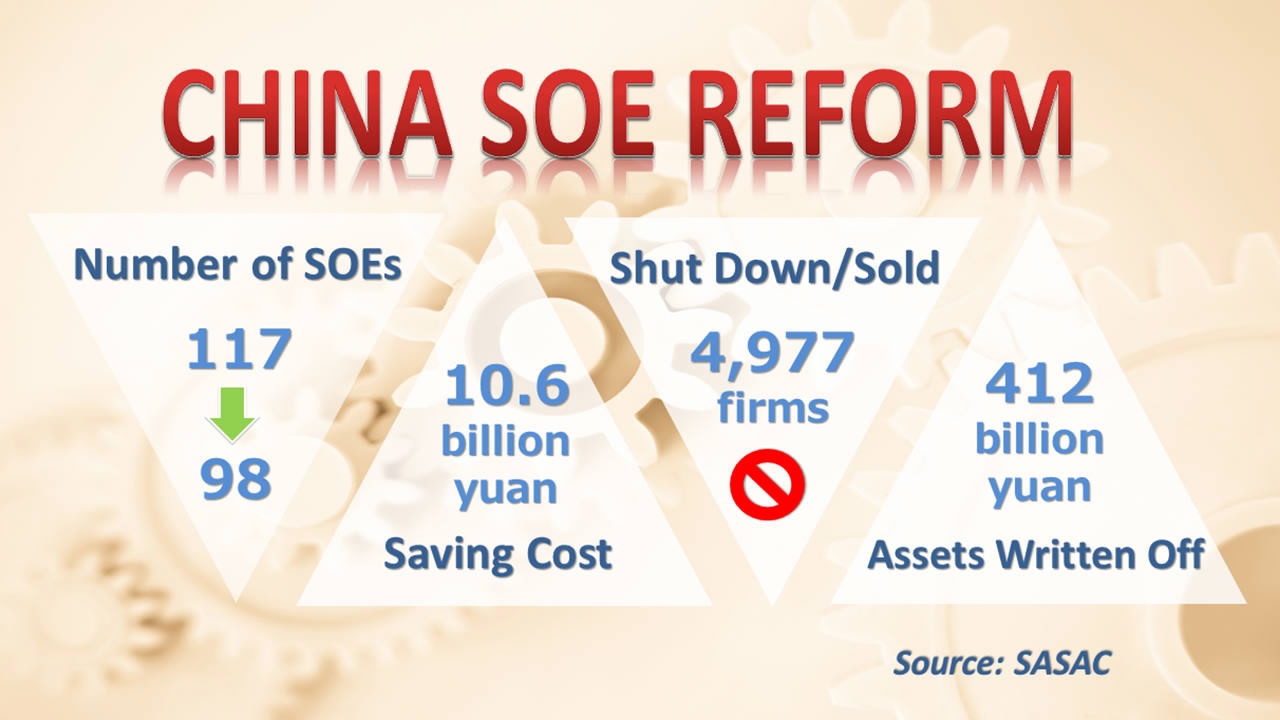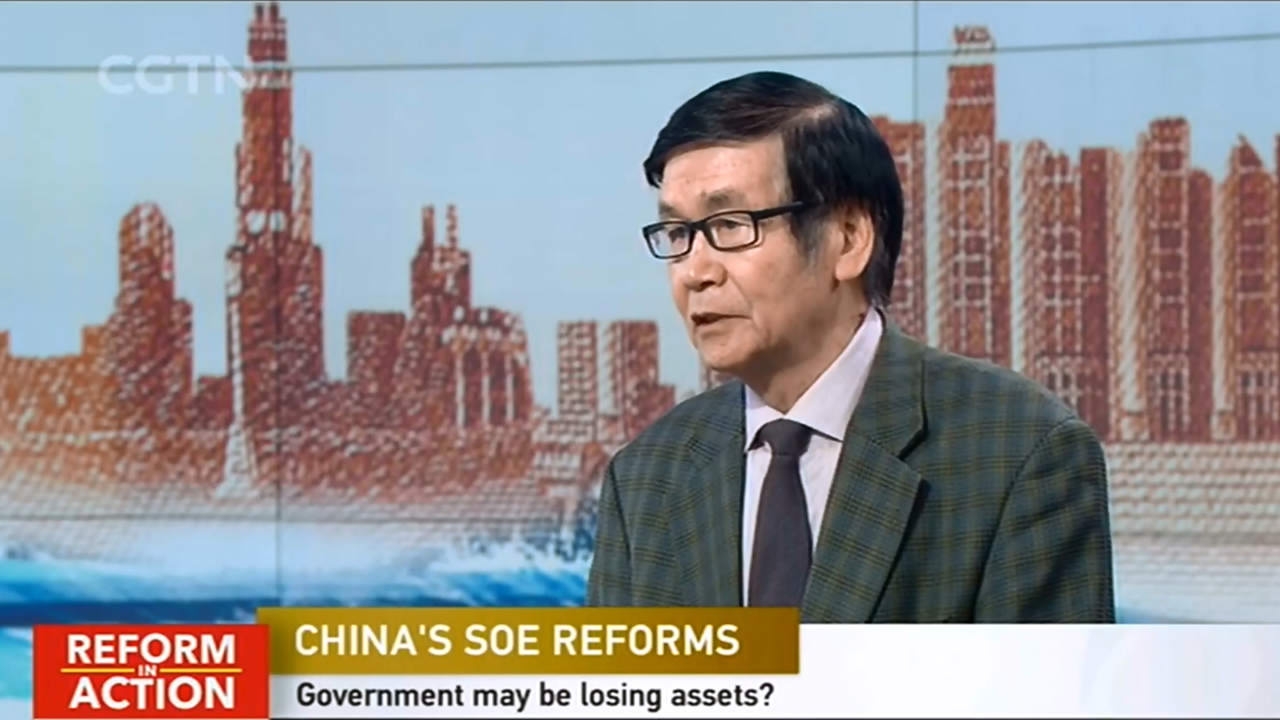
Business
20:23, 12-Oct-2017
Reform in Action: China moves to make SOEs more independent
By CGTN’s Zhu Feng

China's state-owned enterprises (SOE) have great influence in the country's strategic sectors such as defense and energy supply. In the past five years, the government has made concrete efforts in market-oriented reforms.
While SOEs are often criticized for low efficiency, outdated governance and redundant workforce, Professor Liu Zhiqin, the senior fellow at Chongyang Institute for Financial Studies said, “At this moment, I think all these reforms and the restructurings have come to a very positive result and outcome.”

CGTN Photo
CGTN Photo
The number of SOEs supervised by the central government has been reduced to 98 from 117 in the past five years, according to the State-owned Assets Supervision and Administration Commission of the State Council (SASAC). The restructuring has helped these companies save more than 10 billion yuan (1.5 billion US dollar) in operating costs.
Meanwhile, the SASAC has been working to eliminate overcapacity and shut "zombie" firms, with 4,977 SOE units closing last year in a campaign involving the reallocation of 307,000 workers and covering assets worth 412 billion yuan (62.5 billion US dollars).
Mixed-ownership reform gives SOEs more freedoms
The central government has been pushing mixed-ownership reform hard in the past five years. According to data released by the SASAC, as of the end of 2016, mixed ownership reform between SOEs and company system enterprises accounted for nearly 70 percent of central SOE reforms. And the ratio was close to 50 on the local SOE level.

“Through the integration of state-owned and non-state-owned capital, businesses can absorb the decision-making mechanisms and flexibility of private enterprises, but also stand on the strong foundation of state-owned enterprises. This is a win-win situation,” said Xiao Yaqing, Chairman of SASAC.
In terms of corporate governance structure, the mixed-ownership reform has expanded from third-tier subsidiaries to second tier. Pilot programs have been tested in sectors including utilities, oil, gas and railway.

VCG Photo
VCG Photo
While some worry about the government losing control of state-owned assets, Liu said it is not a question. In opposite, Liu stressed that the government is giving more “freedoms” to SOEs, so that they can make their own decisions and operate according to the business plans.
“If the government wants to control, nobody can stop it. But now, I think the central government notified that they give more freedoms to SOEs. Especially in human resources, fiscal financial sector and profit distribution, the central bank has said there's ‘no closed administration’. This is a good and positive signal for all these SOEs in China,” Liu elaborated.
Corporate reform helps improve SOE’s market competitiveness
Corporate reform of SOEs accelerated in the past five years, as both central and local governments have been trying to improve SOEs’ market competitiveness.

Based on data from SASAC, more than 90 percent of China's SOEs on both central and local level have completed corporate reform. That means they will gradually move towards independent entities in the market.
“In the coming five years, we’ll focus more on boosting competitiveness and increasing quality of management of SOEs, especially in preserving and increasing value of state assets,” Xiao addressed.
The government has also been trying to push purely commercial state firms to go public, or increase the values of their listed units. Shanghai Huayi Group is one of them. 11.6 billion yuan (1.7 billion US dollars) of its core assets went public through a backdoor listing in 2016.

VCG Photo
VCG Photo
“In the past, only 25 percent of the company's assets were listed, now we've increased that to 85 percent, almost the entire group. I think it's a good opportunity for us to go further from here,” said Liu Xunfeng, chairman of Shanghai Huayi Group.
“The key problem of the reforms is to make sure SOEs would be compatible with market competition,” Zhang Huiming, director of Fudan University Enterprise Research Institute, told CGTN. “For SOEs to go public, it is essential to clear their historical burdens and separate the part that's suitable for market competition from the parts that are not suitable.”
(CGTN’s Mi Jiayi and Wang Yue also contributed to the story)
Read more:

SITEMAP
Copyright © 2018 CGTN. Beijing ICP prepared NO.16065310-3
Copyright © 2018 CGTN. Beijing ICP prepared NO.16065310-3